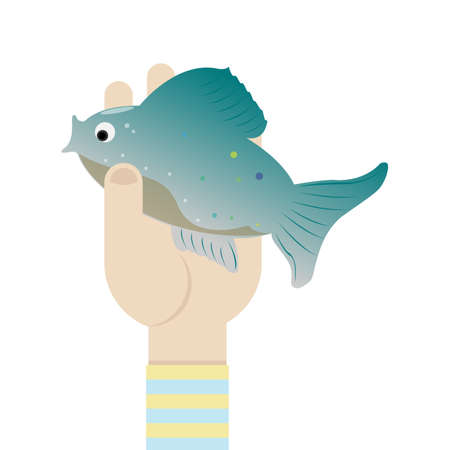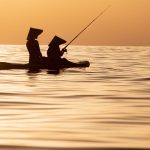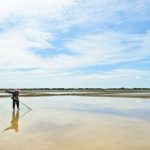1. Making Fishing a Game
One of the best ways to keep kids engaged while fishing is to turn the experience into a fun and friendly game. Kids naturally love competition, and adding playful challenges can make the day on the water more exciting for them. By turning fishing into a series of mini-games, you’ll keep their attention longer and create lasting memories.
Fun Fishing Challenges
Try setting up small competitions with simple rewards. These don’t have to be elaborate—something like picking what snack to eat first or choosing the next fishing spot can be enough to motivate younger anglers.
| Challenge | Description | Possible Reward |
|---|---|---|
| First to Catch a Fish | See who catches the first fish of the day | Winner picks the music on the ride home |
| Smallest Fish | A silly challenge where catching the tiniest fish wins | Gets to name everyones caught fish |
| Most Colorful Fish | Catch the fish with the most unique colors or patterns | Picks the next fishing game |
| Biggest Splash | A fun twist—who can make the biggest splash casting their line? | Gets an extra snack or treat |
Keep It Light and Fun
The goal isn’t to win big prizes—it’s to encourage kids to stay focused and enjoy every moment by making it playful. Let them help decide the challenges, so they feel included and excited. A little friendly competition goes a long way in keeping boredom at bay during slower fishing moments.
2. Teaching Basic Skills in a Fun Way
Introducing kids to fishing is all about making it exciting and easy to understand. Instead of diving into complex techniques, break things down into bite-sized lessons that are fun and rewarding. Keep the energy light and positive—every effort deserves a high five!
Start with the Basics
Begin by teaching one skill at a time. Focus on casting, baiting the hook, and reeling in. Make these mini-lessons short and sweet so kids don’t get overwhelmed or bored.
Casting Made Simple
Use lightweight gear and practice in an open area before hitting the water. Show them how to:
- Hold the rod with two hands
- Press the button (on a spincast reel) or flip the bail (on a spinning reel)
- Swing the rod back gently and then forward smoothly
- Let go of the button or line at the right moment
Make a game out of it—see who can cast closest to a floating target like a pool noodle ring.
Baiting the Hook Without the “Ick”
If live bait is too much at first, start with artificial bait. Show them how to:
- Hold the hook safely (point down and away)
- Thread soft plastic bait onto the hook slowly
- Keep fingers clear of sharp points
You can even turn this into a craft activity—let kids choose their favorite colors of bait or decorate bobbers with stickers.
Reeling In Like a Pro
Teach reeling as a rhythm, not a race. Let them practice by pulling in weighted lines so they get used to the feel. Encourage them to:
- Keep the tip of the rod up
- Reel steadily, not too fast
- Watch for tension in the line—it means something’s nibbling!
Praise Every Effort
No matter how small their success, make it a big deal. Positive reinforcement goes a long way with kids. Use phrases like:
| Skill Learned | Praise Example |
|---|---|
| Casting straight | “Awesome job! That went right where you aimed!” |
| Baiting safely | “You handled that hook like a champ!” |
| Reeling smoothly | “Look at that pro reel action!” |
Make It Interactive
Add variety by letting kids take turns being the “teacher” after they’ve learned a skill. This builds confidence and reinforces what theyve learned while keeping everyone engaged.
Pro Tip:
Bring along extra rods or practice poles so kids can repeat skills without waiting around—they’ll stay more focused and have more fun.
The goal isn’t perfection—it’s progress and participation. Keeping each lesson playful makes fishing an adventure they’ll want to come back to again and again.

3. Incorporating Nature Exploration
Fishing trips are a great opportunity to introduce kids to the natural world around them. While waiting for a bite, encourage them to explore the environment. This keeps their minds active and helps create a deeper appreciation for nature.
Turn Curiosity into a Fun Learning Experience
Instead of just sitting and waiting, turn downtime into an adventure. Ask your kids to look around and observe the different animals and plants nearby. Can they spot a bird in the trees? What bugs are crawling on the rocks? Are there fish swimming near the shore?
What to Bring for Nature Exploration
| Item | Purpose |
|---|---|
| Binoculars | Great for spotting birds and wildlife from afar. |
| Pocket Field Guides | Help identify local birds, fish, insects, and plants. |
| Notebook & Colored Pencils | Let kids draw or write down what they see — its like their own fishing journal! |
Fun Exploration Activities
- Bird Watching: Challenge your kids to find three different bird species while you fish.
- Insect Safari: Look under rocks or near the water’s edge for bugs — just remind them not to touch anything unfamiliar.
- Fish ID Challenge: If you catch something, help them identify it using a guidebook or app.
Pro Tip:
If youre heading to a new lake or river, do a quick search beforehand on what kinds of animals and plants are native to that area. It’ll make the exploration more exciting when they know what to look out for!
4. Packing Kid-Friendly Gear & Snacks
One of the best ways to keep kids engaged and happy during a fishing trip is by making sure theyre comfortable and well-fed. That means bringing along gear thats made just for them, cozy places to sit, and a cooler stocked with their favorite snacks and drinks. When kids feel good, they’re more likely to stay interested in fishing longer.
Choose Child-Sized Fishing Gear
Adult rods and reels can be too big or heavy for little hands. Look for child-sized fishing poles that are lightweight, easy to use, and fun—some even come in bright colors or with cartoon designs. This helps kids feel like the gear was made just for them.
Kid-Friendly Fishing Gear Checklist
| Item | Why It Matters |
|---|---|
| Child-sized fishing rod & reel | Easier for kids to handle and cast |
| Life jacket (U.S. Coast Guard approved) | Keeps your child safe near or on the water |
| Tackle box with basic gear | Simple hooks, bobbers, and lures for beginner-friendly fishing |
| Sunglasses & hat | Protects eyes and skin from the sun |
| Sunscreen & bug spray | Prevents sunburns and bug bites—two quick ways to ruin a trip! |
Create a Comfortable Hangout Spot
If youre going to be out on the water for a few hours, having a cozy place for your child to relax is important. Bring along folding chairs or cushioned seats made for kids. Consider an umbrella or pop-up shade if youll be on shore without much cover. A tired kid isn’t a happy fisherman.
Pack Plenty of Snacks & Drinks
A well-stocked cooler can make all the difference. Kids burn energy fast when they’re outside, so bring easy-to-eat snacks and plenty of water or juice boxes. Avoid messy foods or those that spoil quickly in the sun.
Kid-Approved Cooler Essentials
| Snacks | Beverages |
|---|---|
| Granola bars | Bottled water |
| Sliced fruit (apples, grapes) | Juice boxes |
| String cheese or cheese cubes | Sports drinks (for hot days) |
| Pretzels or crackers |
Pro Tip:
If youre fishing from a boat, make sure everything is stored securely in waterproof containers or zip-top bags so nothing gets soggy—or lost overboard!
Packing smart shows your kids that you’ve thought about their comfort and fun, which makes them more excited to join future trips. With the right gear and tasty treats, theyll have every reason to enjoy their time on the water.
5. Planning for Breaks and Backup Activities
Fishing with kids can be a blast, but their attention spans are usually shorter than adults. That’s why it’s a smart idea to plan for breaks and have some backup activities ready. These little distractions can help avoid meltdowns and keep the day fun for everyone.
Why Breaks Are Important
Sitting still and waiting for fish to bite isn’t always exciting for kids. Giving them short breaks helps them recharge, stretch their legs, and get rid of extra energy. This way, they’re more likely to stay positive and interested when it’s time to fish again.
Easy Backup Activities to Bring Along
You don’t need anything fancy—just some simple items that can entertain your child during downtime. Here are a few ideas:
| Activity | Why It Works |
|---|---|
| Coloring Books & Crayons | Calms kids down and gives them something creative to do. |
| Deck of Cards | Great for quick games that keep hands and minds busy. |
| Football or Frisbee | Perfect for burning off energy between casts. |
| Snack Time Kits | A small snack break doubles as a chance to relax and refuel. |
| Nature Scavenger Hunt List | Makes exploring the area fun while teaching kids about nature. |
Tip: Set Expectations Early
Before you even cast your first line, let the kids know that its okay to take breaks. Explain that fishing is about having fun and being outside—not just catching fish. This takes the pressure off and makes space for other kinds of fun too.
Pro Tip:
Pack everything in one easy-to-carry bag or tackle box compartment so youre not digging around when its time for a break. Keep things organized so transitions are smooth and stress-free.


